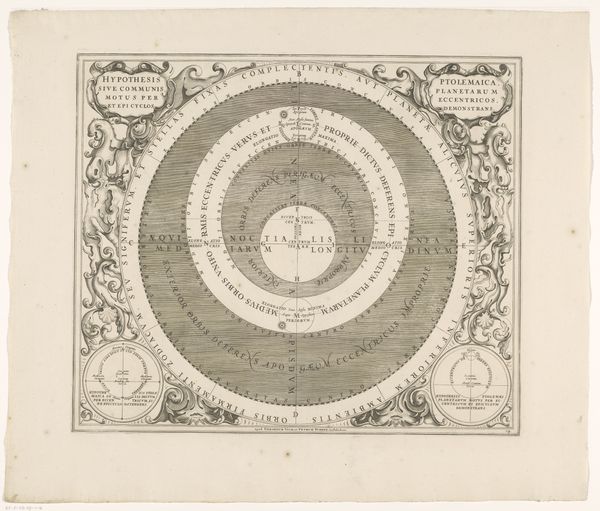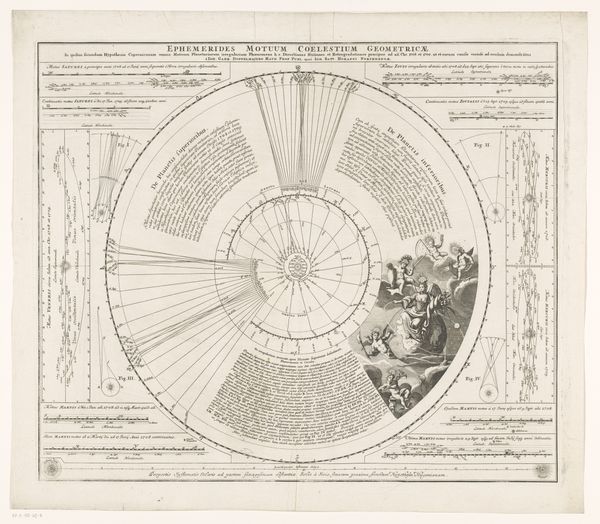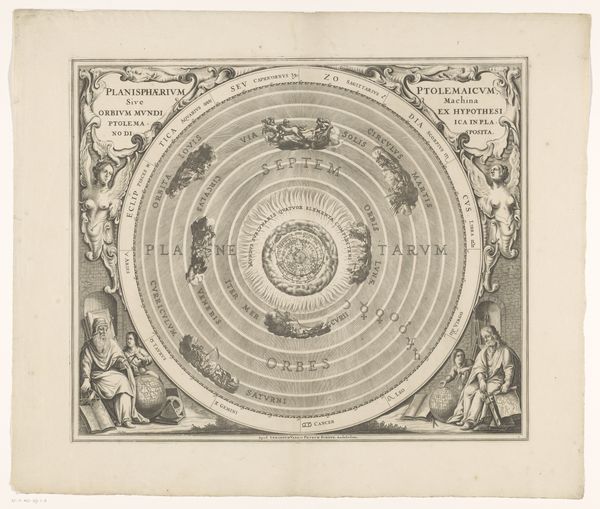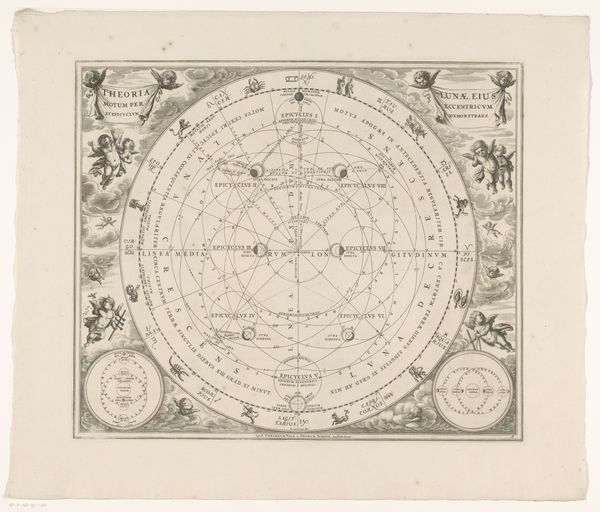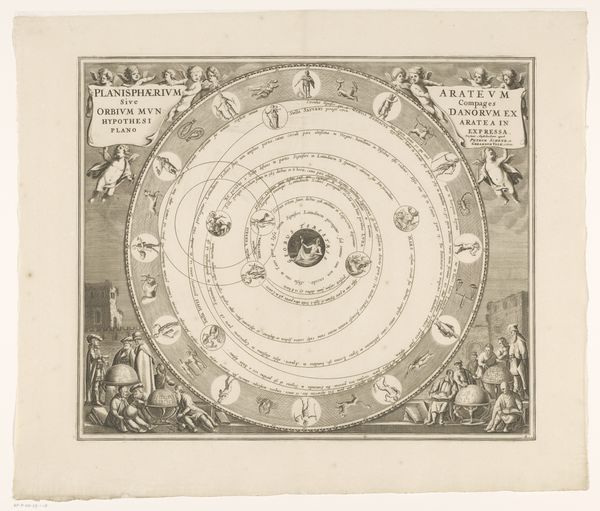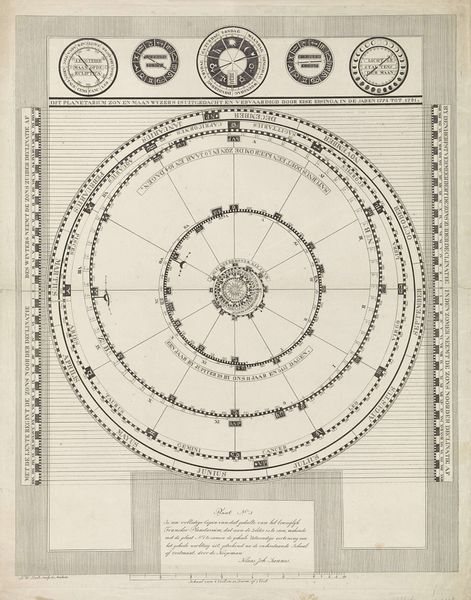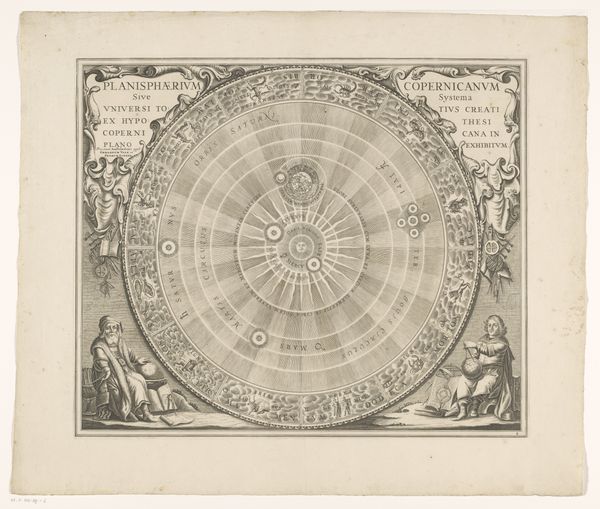
Kaart met voorspelling van de banen van Mars, Jupiter en Saturnus volgens Brahe's stelsel 1702 - 1742
0:00
0:00
print, engraving
#
baroque
# print
#
old engraving style
#
geometric
#
line
#
history-painting
#
engraving
Dimensions: height 493 mm, width 583 mm
Copyright: Rijks Museum: Open Domain
This undated print depicts the predicted paths of Mars, Jupiter and Saturn according to the theories of the 16th-century astronomer Tycho Brahe. Brahe’s model of the solar system was a hybrid of the old geocentric view, with the Earth at the centre of the universe, and the new heliocentric model proposed by Copernicus, in which the planets revolve around the Sun. This image suggests that there was no universally accepted model of the cosmos at this time and that institutions of science were in flux. It was made in an era that was deeply preoccupied with mapping and predicting the movement of the planets. This print is a fascinating glimpse into the history of science and the ongoing debate about our place in the universe. The inclusion of cherubic figures also reminds us that faith and science were not always seen as separate spheres of knowledge. To better understand the context of this image, one might look to period books on astronomy or consult the records of scientific institutions. The meaning of this image is contingent on its social and institutional context.
Comments
No comments
Be the first to comment and join the conversation on the ultimate creative platform.

